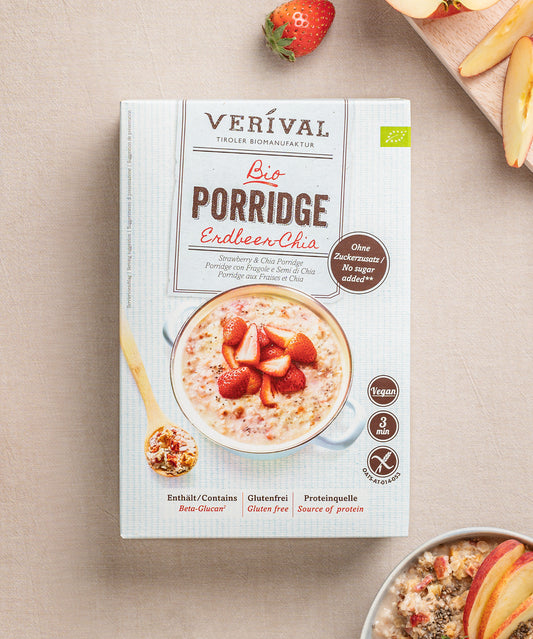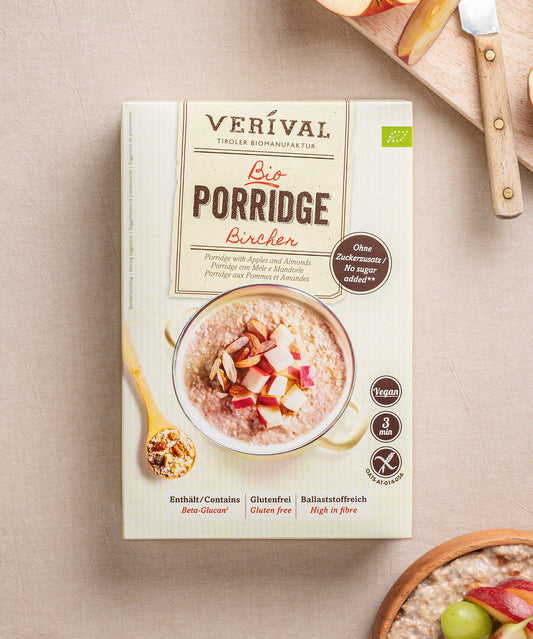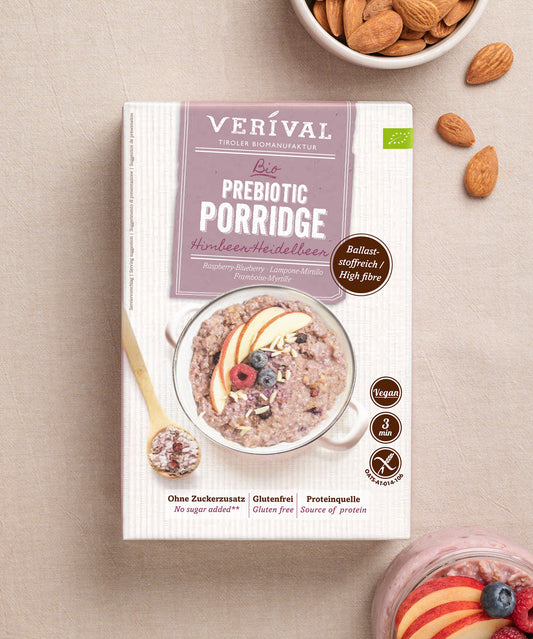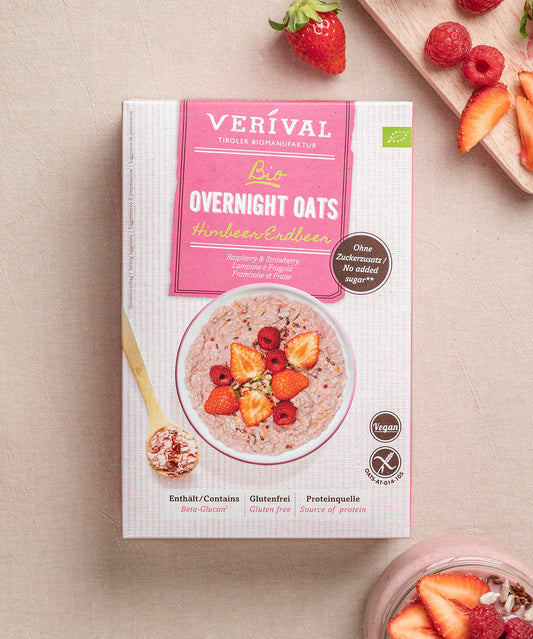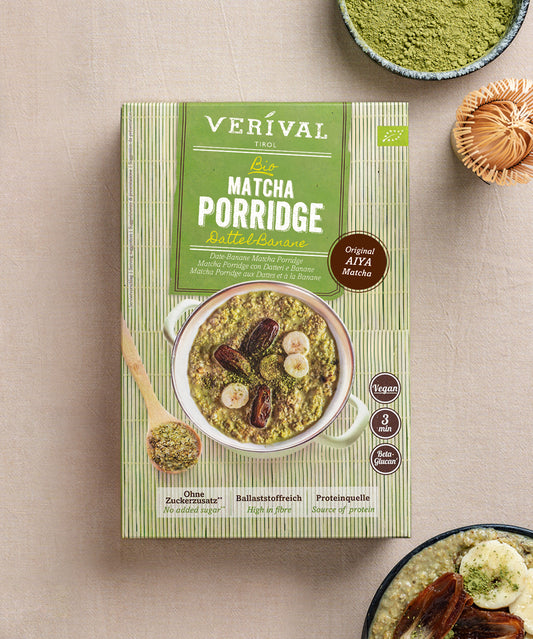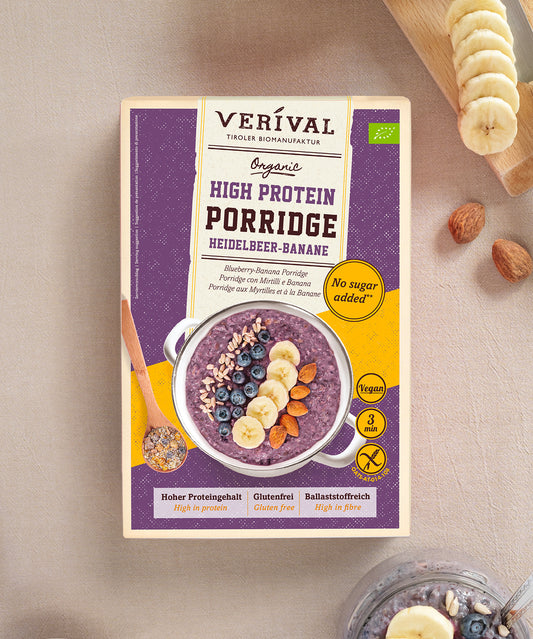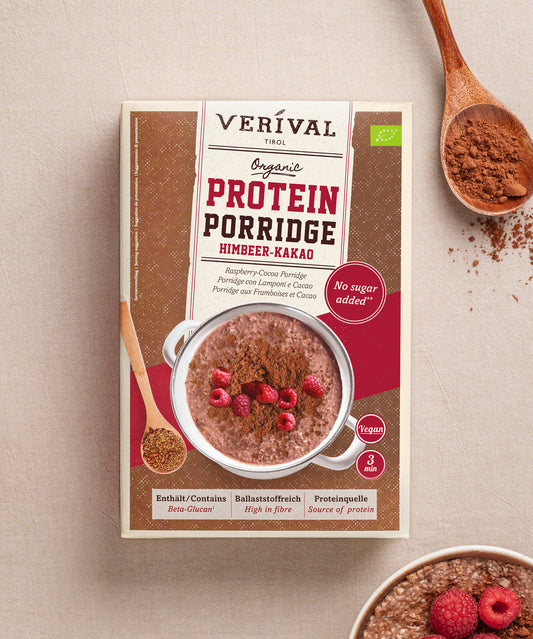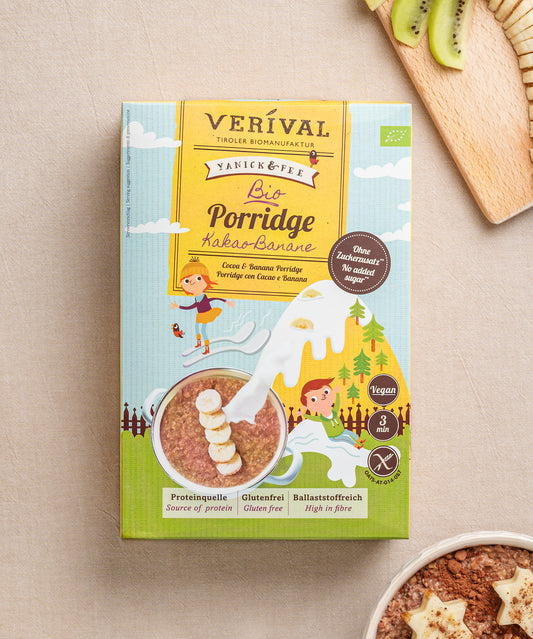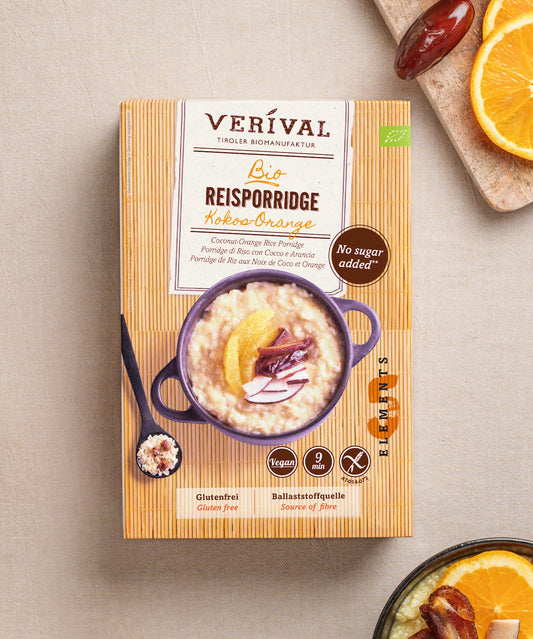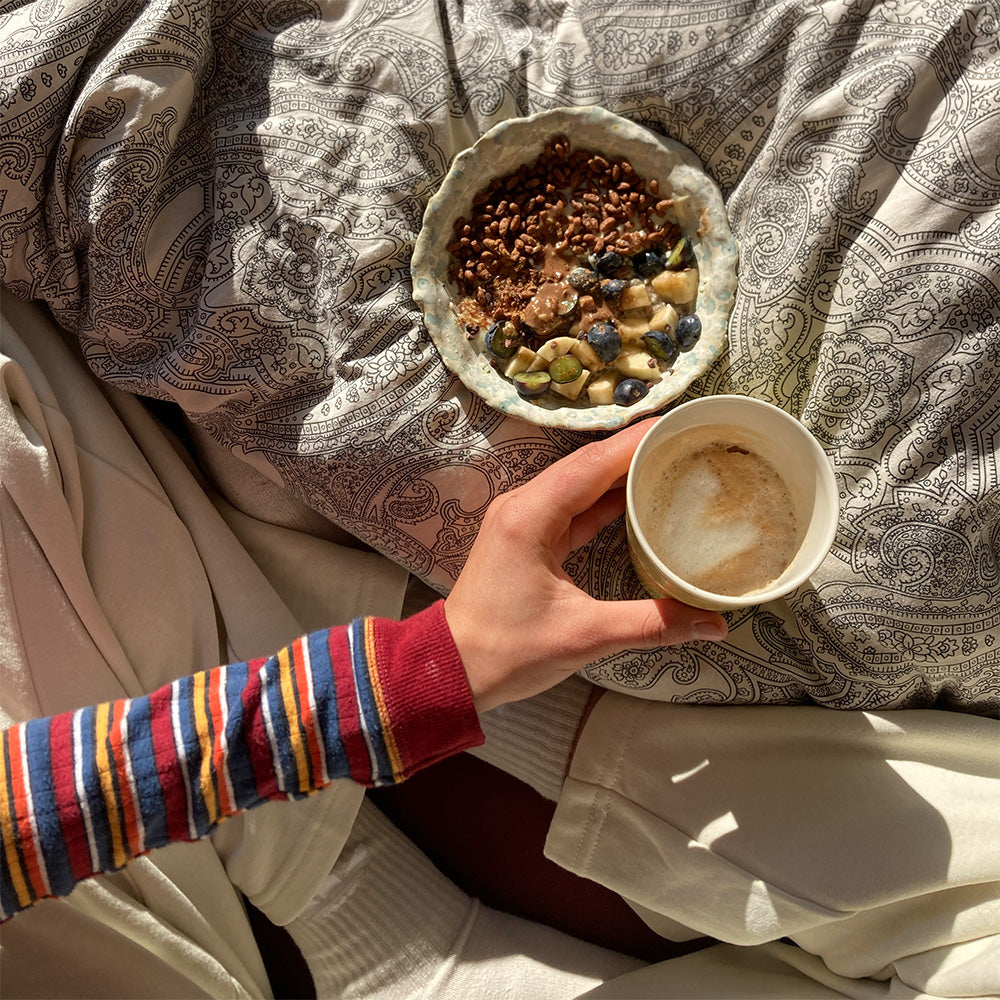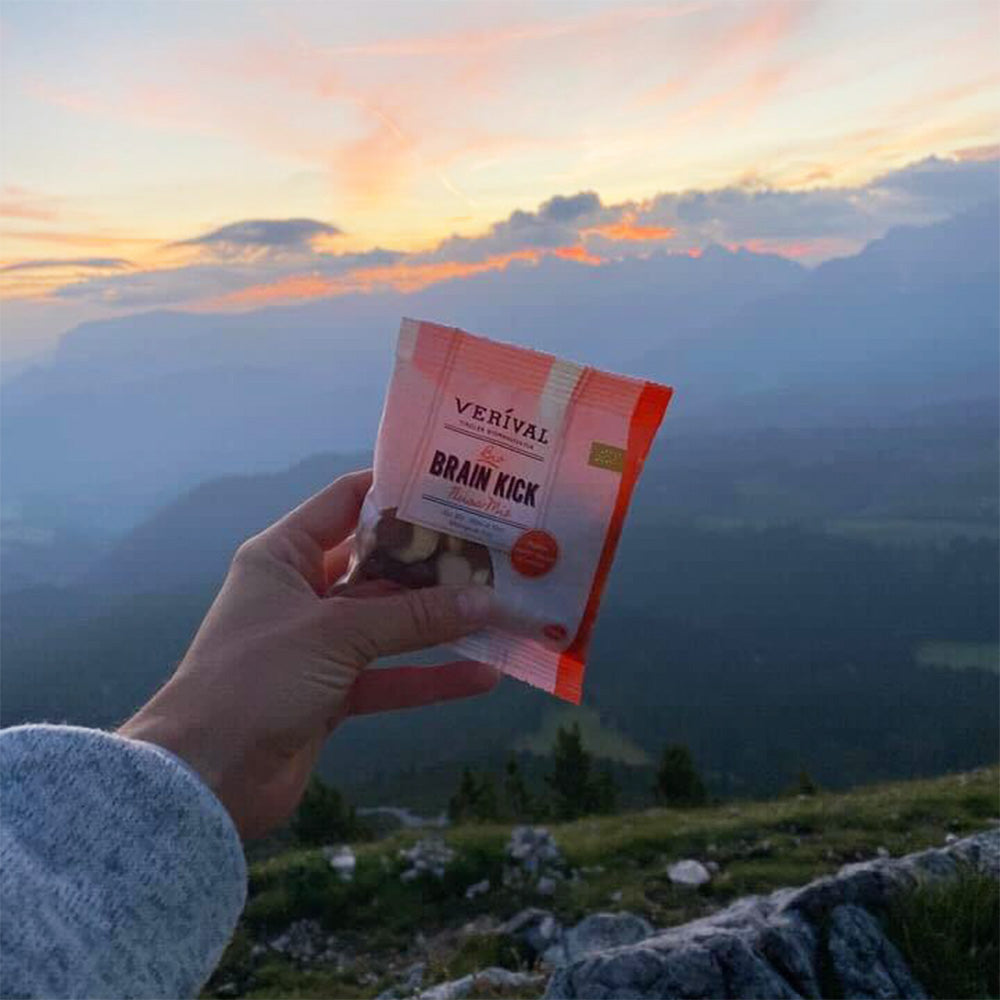Sudden headaches after a glass of red wine? Itching after a cheese sandwich or stomach problems after tomato sauce? Then there may be more to it than a normal intolerance. With histamine intolerance, your body cannot break down histamine from food properly—and reacts to it with a variety of symptoms. What many people don't know is that histamine is not only found in obvious foods such as cheese or red wine, but also in many products that are considered “healthy.” In this article, you will learn which foods are best to avoid if you have histamine intolerance, why they are problematic, how histamine works in the body, and how you can make your everyday life relaxed and enjoyable despite restrictions.
Discover the entire Verival breakfast range here and celebrate!
How does histamine intolerance develop?
There is no general answer to the question of how histamine intolerance develops. This is because the intolerance often develops gradually – sometimes after an infection, sometimes after prolonged use of medication, and sometimes for no apparent reason. However, one thing is clear: the trigger is almost always an imbalance between histamine and the enzyme that breaks it down – diamine oxidase (DAO).
DAO deficiency: the most common cause
DAO plays the most important role in the development of histamine intolerance. It breaks down histamine in the small intestine before it enters the bloodstream. If this enzyme is not present in sufficient quantities or does not function properly, an excess of histamine builds up in the body – and this is precisely what causes the symptoms.
A DAO deficiency can be congenital, but is often acquired. Possible reasons for this include:
- chronic intestinal diseases (e.g., irritable bowel syndrome, Crohn's disease)
- infections in the gastrointestinal tract
- disturbed intestinal flora
- medications that block DAO
- hormonal influences (e.g., pregnancy, menopause)
- chronic stress
Histamine intolerance does not often develop overnight
Many sufferers report that they used to be able to tolerate everything—and then suddenly symptoms appeared. The intolerance often develops over months or years without being noticed. Only when the “histamine load” becomes too high and the body can no longer compensate do the first reactions become noticeable.
An interplay of many factors
Histamine intolerance is rarely a single issue. Several factors usually play a role: gut health, enzyme activity, diet, lifestyle, medication, and hormonal changes. That's why it's important to not just change your diet, but to look at your whole body.
What histamine does in your body
Histamine is a substance produced naturally by the body that performs many important functions. Without histamine, you would not be able to respond to external stimuli or fight inflammation, and your digestion would not function properly. It is therefore not a “harmful” substance – quite the contrary. Problems only arise when there is too much histamine in the body or when it is not broken down properly.
Histamine as a signaling substance
Histamine belongs to the group of biogenic amines and acts as a messenger substance in the body. It is stored in certain cells — mainly in mast cells — and released when needed. It performs various tasks:
- It dilates blood vessels and regulates blood pressure.
- It plays a central role in allergic reactions.
- It is involved in the immune response.
- It stimulates stomach acid production.
- It influences the sleep-wake cycle in the brain.
This versatility makes histamine so valuable to the body — but also prone to overreactions.
When histamine levels become unbalanced
Normally, excess histamine is broken down by the enzyme diamine oxidase (DAO). This enzyme is mainly active in the small intestine and ensures that histamine from food is rendered harmless before it enters the bloodstream. However, if too much histamine is absorbed at once – or if the DAO works too slowly – the histamine levels in the body rise. The result: symptoms such as headaches, skin redness, diarrhea, or shortness of breath.
Why histamine is not “bad”
Histamine itself is not your enemy – it's all about balance. When DAO is working properly, your body can process even histamine-rich foods without any problems. It is only when this process is disrupted that histamine becomes a problem. The aim is therefore not to demonize histamine, but to identify the causes of the imbalance and help your body restore it.
Why certain foods are problematic
Not all foods have the same effect on histamine intolerance. Some products contain particularly high levels of histamine, while others stimulate the body's own release of histamine or block the enzyme DAO, which is supposed to break down histamine. To better understand why certain foods trigger symptoms, it helps to look at the biochemical background and the way foods are produced, stored, and prepared.
Histamine is produced through ripening, fermentation, and storage
Histamine does not simply form randomly in food. It is produced when certain bacteria synthesize histamine from protein components. The longer a product ripens or is stored, the more time these microorganisms have to form histamine.
This is precisely why mature cheeses, cured meats, fermented products, and canned foods are particularly problematic. Incorrect storage—such as fish that is not refrigerated properly—can also lead to a rapid increase in histamine levels.
Verival muesli with no added sugar—try it now
When it comes to histamine intolerance, fresh is not just better—it is sometimes crucial.
Histamine liberators: When foods release histamine
Some foods contain very little histamine themselves, but can trigger a reaction in the body. They stimulate the mast cells to release stored histamine, which ultimately has the same effect as a high histamine intake. Those affected often react to citrus fruits, strawberries, chocolate, or alcohol. These substances are known as histamine liberators.
The reaction depends greatly on individual sensitivity – while some people can eat half an orange without any problems, others experience symptoms after just a few bites.
DAO inhibitors: When breakdown is blocked
Some foods and substances directly inhibit the enzyme diamine oxidase. These include alcohol, black and green tea, cocoa, and certain medications. As a result, even small amounts of histamine cannot be broken down quickly enough and accumulate in the blood. It is particularly important to pay close attention to these “invisible” inhibitors, as they can suddenly make foods that were previously tolerated intolerable.
The main suspects: foods you should avoid
If you suffer from histamine intolerance, you don't have to give up everything — but certain foods are significantly more problematic than others. Foods that have been aged, fermented, or heavily processed contain particularly high levels of histamine. Other foods stimulate the release of histamine in the body or inhibit its breakdown. Here is an overview of the most important groups to be cautious of, with specific examples and background information.
Mature dairy products
The maturing process of cheese leads to the formation of high levels of histamine. The harder or longer the cheese has matured, the more histamine it contains.
Particularly problematic:
- Parmesan
- Camembert
- Gouda
- Emmental
- Blue cheese
Better tolerated:
- Cream cheese
- Cottage cheese
- Ricotta (if fresh)
Meat and sausage products
Meat naturally contains little histamine, but when it is processed, cured, smoked, or air-dried, the content increases dramatically.
To avoid:
- Salami
- Serrano or Parma ham
- Bacon
- Liver sausage
- Cured sausage
Alternative:
Freshly roasted or steamed meat (chicken, beef, turkey) – prepare immediately after purchase if possible
- Fish and seafood
Fresh fish is very sensitive. If it is not cooled or processed immediately after being caught, histamine forms extremely quickly – a natural protective mechanism against spoilage, but one that can cause problems for you.
Particularly unfavorable:
- Tuna (fresh & canned)
- Sardines, mackerel, herring
- Smoked salmon
- Mussels and shellfish
Tip: Only use freshly caught or immediately frozen fish – and never reheat it.
Vegetables with high histamine potential
There are also some vegetables that cause problems for people with histamine intolerance – not because they contain extremely high levels of histamine themselves, but because they act as liberators or trigger other reactions in the body.
Critical foods include:
- Tomatoes (including tomato sauce and ketchup)
- Spinach
- Eggplant
- Avocados
- Sauerkraut (fermented)
The following are generally well tolerated:
- Zucchini
- Carrots
- Pumpkin
- Parsnips
- Cucumbers
Alcohol and caffeinated beverages
Alcohol is one of the strongest DAO inhibitors. Red wine, sparkling wine, and beer in particular also contain high amounts of histamine. Beverages such as black and green tea, mate, and energy drinks can also be problematic, partly due to their caffeine content and partly due to the flavors or additives they contain.
Avoid if possible:
- Red wine, white wine, beer, sparkling wine
- High-proof alcohol (especially whiskey, rum)
- Caffeinated soft drinks and energy drinks
More suitable:
- Still water, herbal teas, unsweetened fruit juices (in small quantities)
Hidden dangers: What you may not be aware of
In addition to the well-known histamine-rich foods, there are many products that appear harmless at first glance but can cause problems in the body. Industrially processed foods in particular often contain additives or substances that release histamine, block DAO breakdown, or contain histamine themselves—without you noticing it directly. Even so-called “healthy” foods can be problematic if you are particularly sensitive.
Ready-made products and canned foods
Ready meals, packet soups, seasoning sauces, and canned products often contain a combination of critical ingredients: yeast extracts, flavorings, preservatives, hydrogenated fats, and glutamate can release histamine or inhibit DAO activity. Even if the product itself is not considered “high in histamine,” this mixture can trigger symptoms.
Typical examples:
- Soup cubes and instant broths
- Ready-made sauces (e.g., barbecue, curry, Asian sauces)
- Canned tomatoes, beans, fish, or vegetables
- Frozen pizza or ready-made soups
- Bake-off rolls with added flavorings or yeast
Pay particular attention to the list of ingredients. The longer it is and the more you can't pronounce, the more likely it is that your body will react.
Sweets, chocolate, and nuts
Many sweets contain cocoa or chocolate, both of which are substances that act as histamine liberators. In addition, ready-made bars, cookies, and spreads often contain other critical ingredients: emulsifiers, soy lecithin, flavorings, hydrogenated fats, fructose, and more.
Many nuts—especially cashews, walnuts, and peanuts—can also cause problems for people with histamine intolerance. They promote the release of histamine in many people, even though they contain very little histamine themselves.
Better alternatives:
- Pure rice syrup chocolate or white chocolate without cocoa powder
- Macadamia nuts, blanched almonds (in small quantities)
- Homemade sweets with controlled ingredients
Fruits with trigger potential
Fruit is healthy – that's clear. However, many people with histamine intolerance are sensitive to certain fruits, even though they contain very little histamine. Ripe fruit or fruit with fruit acid can trigger histamine reactions in the body – either as a liberator or in combination with other foods.
Be careful with:
- Citrus fruits (oranges, lemons, grapefruit)
- Strawberries
- Bananas (the riper, the riskier)
- Kiwi, pineapple, papaya, mango
- Dried fruit and fruit juices
Tip: Opt for mild, water-rich fruits such as pears, blueberries, or melon – preferably fresh and not too ripe.
Tips for everyday life: How to really make a low-histamine diet work
Histamine intolerance turns your everyday life upside down – at least at first. Suddenly you're reading ingredient lists, cooking a lot yourself, avoiding restaurants, and asking yourself with every meal: Can I tolerate this? But with a few basic rules and simple strategies, you can integrate a low-histamine diet into your everyday life so that you feel confident – without constant deprivation and without spending hours in the kitchen.
Freshness is your best friend
The fresher the food, the better it will be tolerated. This is especially true for meat, fish, dairy products, eggs, and home-cooked meals. It is best to prepare meals right before eating and either store leftovers in the freezer immediately or avoid storing them altogether. Many people with histamine intolerance do not tolerate reheated food well, as histamine levels rise in the hours after cooking.
Tip: Buy smaller quantities more often. Plan your meals for the week in advance – this will give you security and save you stress.
Learn to read labels correctly
Histamine is often hidden in processed foods. Look out for ingredients such as:
- Yeast extract
- “natural flavoring”
- lemon juice concentrate
- wheat germ, soy lecithin
- preservatives (E numbers)
- binding agents such as carrageenan or xanthan gum
Plant-based milk alternatives and muesli can also be problematic if they contain additives or fermented ingredients. When in doubt, fewer ingredients is better.
Accept that not every day is the same
Sometimes you can tolerate a food without any problems – and the next day you react to it. This is normal. Weather, stress, hormones, or lack of sleep influence how your body deals with histamine. Accept these fluctuations without panicking. The better you know your body, the more relaxed you will be in dealing with it.
Verival breakfast with no added sugar – try it now
Conclusion: clarity instead of sacrifice
Histamine intolerance may sound like a long list of restrictions at first. But the better you understand which foods are really problematic – and why – the easier your everyday life will become. It's not about giving up everything for the rest of your life, but about making informed choices.
With the right knowledge, fresh ingredients, a good sense of your body, and a little patience, you will find a way that works for you. You will quickly realize that even with histamine intolerance, it is possible to enjoy food without discomfort—all it takes is clarity, structure, and trust in your body.


